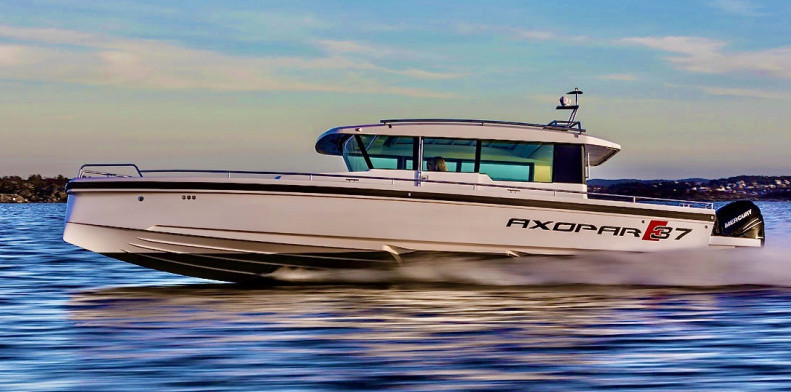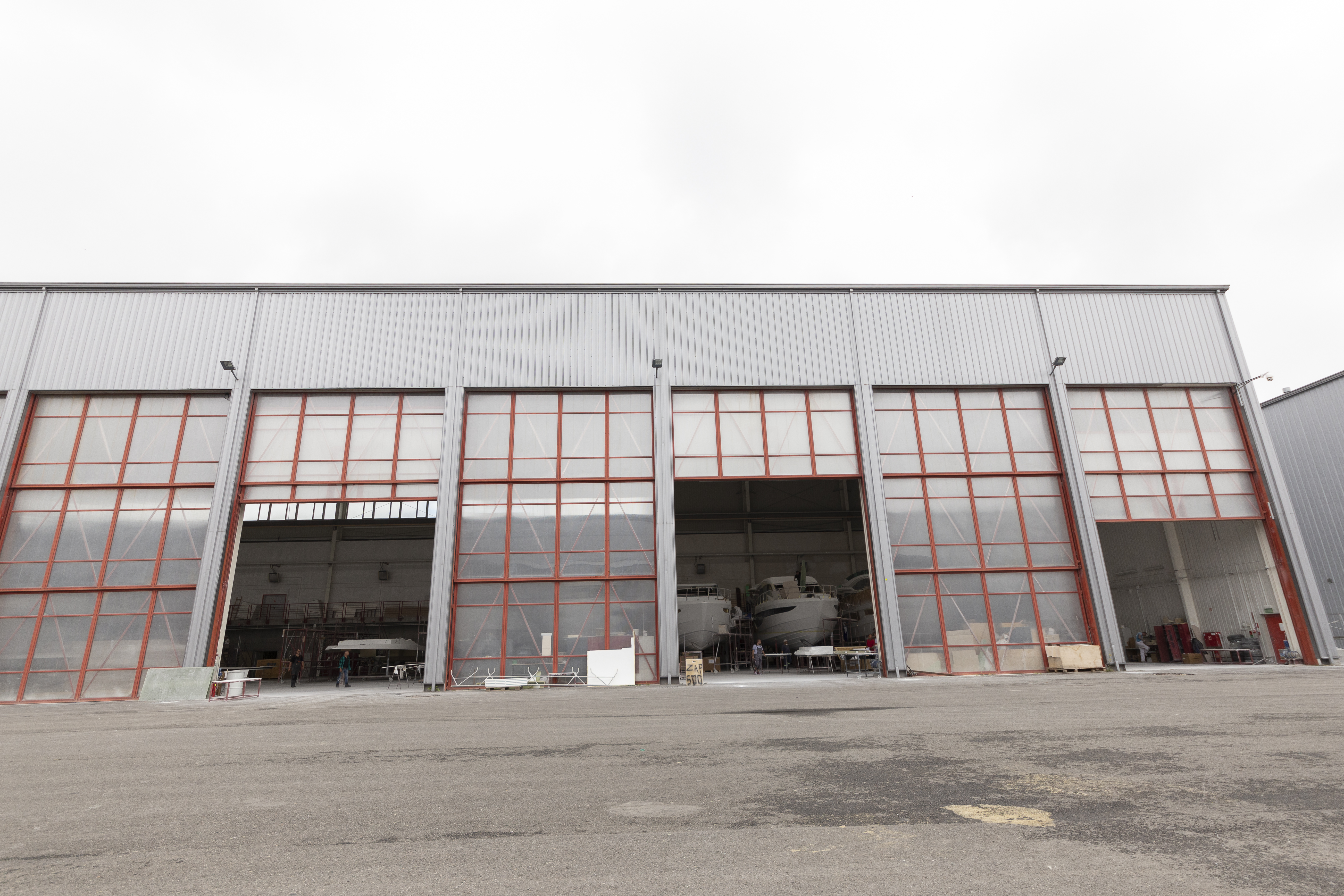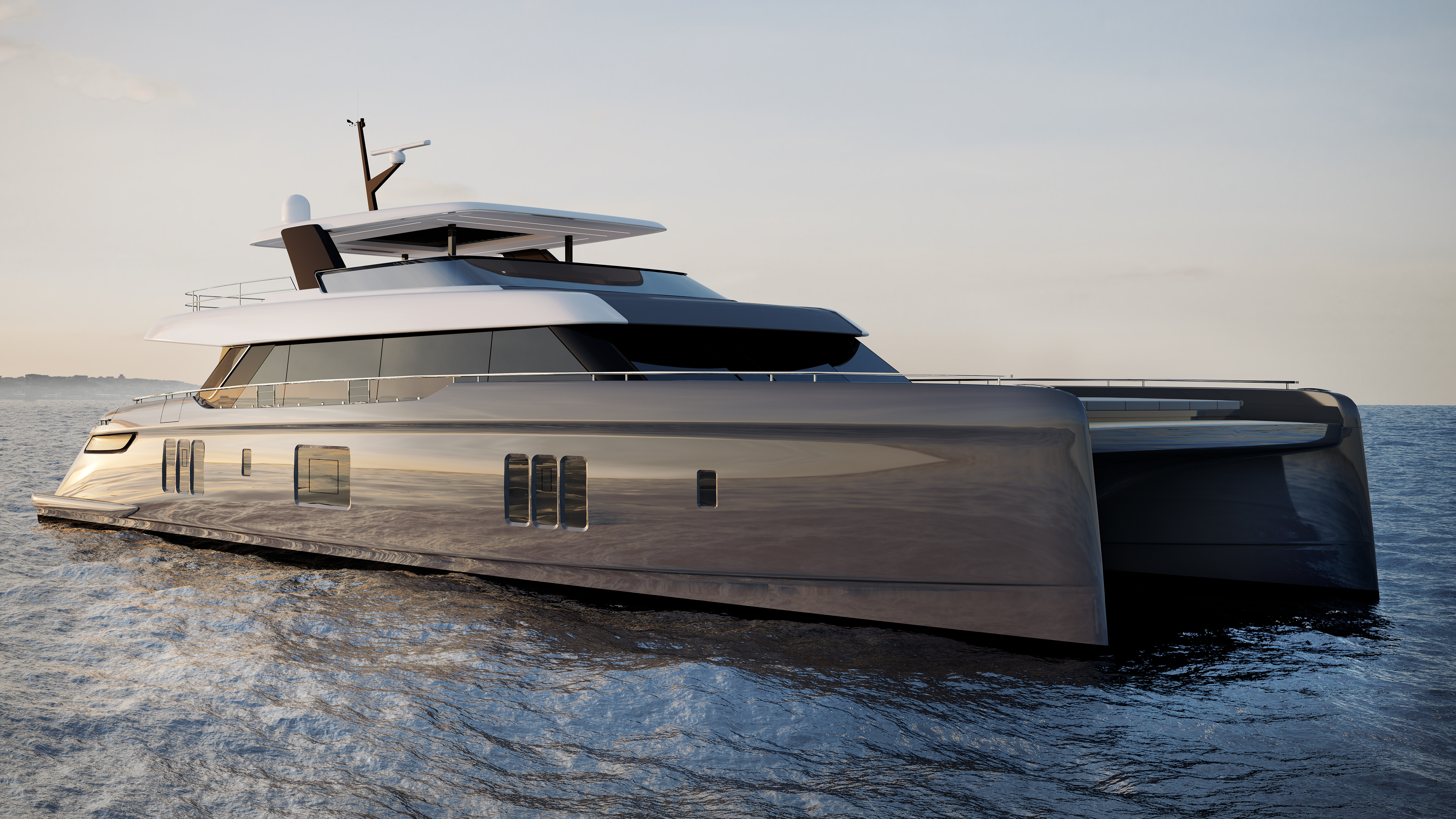Poland, the Other Giant of the Boating Industry
By Dominique Salandre
Boat manufacturing has a long tradition in Europe. However, over the last 20 years, the region’s economy has undergone a radical transformation, giving rise to a true giant of the sector, Poland.
For decades, Poland has been known for building cargo ships, oil tankers and container ships. The revolution led by Lech Walesa was even born from the Gdansk shipyards. However, after the fall of communism, the boating industry has changed radically.
French Origins
The Polish boating sector, as we know it now, was created by people like Frenchman Pierre Charlot who understood its potential early. The country had a qualified and inexpensive workforce, structures in place and a willingness to open up to the West and to the market economy. Competent in wood construction, but not really in fiberglass, it is, however, in this field that Charlot decided to install factories to build fiberglass boats. Then came other pioneers like the French manufacturer Jeanneau, who suffered some disappointments in the beginning. But step-by-step, year after year, the sector has become better organized with more factories and production that has improved at a lower cost than most other countries. Today, with 22,000 boats leaving the factories each year, Poland is the largest boatbuilder in Europe and Polish factories manufacture for French, Scandinavian and American brands. Poland is today the world's second-largest boatbuilder behind the United States and the largest supplier to the US market.
As in the beginning, the country remains mainly a subcontractor market for other countries that boosts the country's trade balance since 95% of Polish production is exported for a total of 484 million euros ($540 million), a figure that has almost doubled in five years. The top three export markets are Norway ($ 77 million), France ($ 61 million) and the USA ($ 57 million). The first customers are Beneteau, Jeanneau (which has a large factory in Ostroda), but also Axopar, Bayliner, Sea Ray, Windy, Quicksilver and many others.
The factories are mainly located in three regions, Gdańsk to the west, Ostroda in the center of the country and Augustow to the north in the Lake District. Today, there are more than 1,000 companies related to recreational boating and the sector employs more than 40,000 people.
Pride in Polish Production
Widely recognized in the world, Polish companies are now introducing larger boats. The average size of the units being produced to date range from 26.25’ to 36.09’ (8 to 11) meters long.
The second change is the emergence of a genuine made-in-Poland product. Indeed, the country does not intend to remain a subcontractor forever and it is natural that more 100% Polish brands emerge. Parker is distributed throughout Europe and management is now thinking about the USA. Delphia was recently acquired by the Beneteau group and Sunreef is one of the iconic figures of the luxury catamaran market. "Our customers are everywhere in the world. We have owners from the USA, from Europe, Asia, Australia "notes Karolina Paszkiewicz, Marketing Director at Sunreef yachts.
The country also has some iconic brands in the field of custom yachts. Conrad is known for its fabrications including the famous Viators. Each of its brands is also a champion of exports since the domestic market represents only 5% of the boats produced in the country.
In the beginning, the sector built itself up, without any real rules and guidelines but over the years, things have changed. There are still yards that build low-quality boats at low prices, but many boatbuilders have now raised their quality standards and refuse to produce poor-quality boats at all, even to the point of losing a customer. To structure and organize the sector, the Polish Chamber of Marine Industry and Water Sports — Polboat — was created in 2006 and the Polish sailing industry and the association now includes 70% of Polish nautical companies.
A success of the Polish industry is deserved, built on the price of the workforce and on the quality of the boats, a point on which insists Sebastian Nietupski, the president of Polboat "Our goal is to produce the best possible quality in the world markets.”
Iconic Leaders
Galeon is the largest Polish brand and one of the major players in the world motor yacht market from 40’ (12.19 m) to 70’ (21.34 m).
The company was created in 1982 by a former naval captain. The company produced 150 units per year with a range from 42’ (12.80 m) to 64’ (19.51 m). In recent years, a partnership with MarineMax in the USA has seen those numbers rise. "In 2016, we built 80 boats, but this number has risen to 120 in 2017 and to 150 in 2018, that is to say, in two years, we have almost doubled our production." says Grzegorz Tuszynski, the general manager Galeon. At the same time, the average size of the boats has increased, particularly in the 40’ (12.19 m) to 70’ (21.34 m) segment which continue to grow while that of 30’ (9.14 m) to 40’ (12.19 m) tends to decrease a little.
"We have been in the US market for only 3/12 years and we are already the second largest boat seller in the country in the 40’ (12.19 m) to 70’ (21.34 m) class and we plan to become number one by 2021," notes Tuszynski.
Europe accounts for around 45% of sales while the remaining 5% is distributed among Asia, Australia and South America. International development is essential to finding a balance against the big American market. "Our goal now is to conquer Asia and the Indian Ocean area where we have just started Australia," says Tuszynski.
To support this performance, and in particular the sales volume achieved by MarineMax, Galeon has invested $11 million over the last two years to increase the production area. The builder now occupies 538,000 sq. ft. (49,981.84 sq. m) and has 1,400 employees and generated revenue of approximately $102 million in 2019. This represents an increase of 20 to 22% compared to 2018.
The manufacturer still plans to launch larger models "I can tell you that we are working on a model over 80’ (24.38 m)." says Tuszynski. Galeon is also expected to offer a new, innovative 30’ (9.14 m) line and expects to introduce new models powered by outboard engines.
The Next Generation
Enthusiasm is also shared by Sunreef Yachts which is now one of the cornerstones of the global luxury catamaran sector. Sunreef Yachts is emblematic of the second generation of Polish builders. It never went through the subcontractor business nor did the company build boats for others. Created in 2002 by Frenchman Francis Lapp, Sunreef took a clear direction. The company wanted to build customizable luxury catamarans with a goal of responding to a demand from customers that did not exist on the market. Lapp was already working in Poland, and the city of Gdańsk was logically chosen to establish his new company. The launch of the first model, in 2003, caused a sensation. In addition to its respectable size, 74’ (22.56 m), it was the first luxury catamaran in the world equipped with a flybridge. The boat was an immediate success. In 2008, the shipyard launched the 70 Sunreef Power, the first motor catamaran capable of crossing the Atlantic. At the beginning of 2020, 16 years after the launch of the first boat, Sunreef indeed sold more than 130 catamarans between 40’ (12.19 m) and 110’ (33.53 m) and the brand became the favorite choice for celebrities like Rafael Nadal and, more recently, Nicolas Rosberg.
Beside these new giants, many new factories and brands are trying to make a name for themselves. They don’t always have the same success, a sign of a sector that is becoming mature. On the other side of the coin, Poland is a victim of its success and must increase its production capacity. "Currently, we are in the process of expanding our business and finding solutions, "says Nietupski. A situation taken seriously by the authorities of the country that works to increase production capacity but also to train future engineers through highly specialized universities. Polish boatbuilders also try to keep talents in the country. This raises wages and, at the end, the price of the boat. As a result, some brands are starting to look at other countries like Turkey or Tunisia, but for the moment, Polish know-how is way ahead.


